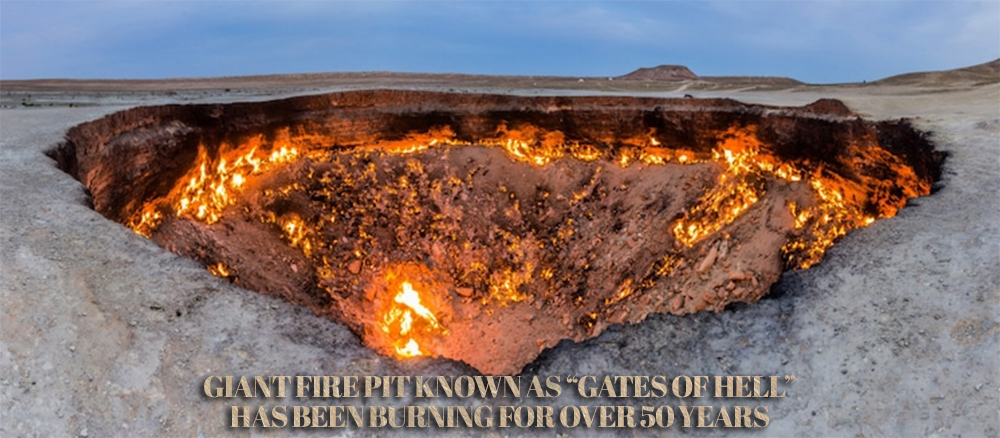In the hot, expansive Karakum desert in Turkmenistan, near the 350-person village of Darvaza, is a hole 230 feet wide that has been on fire for over 50 years.
Though technically called the Darvaza Gas Crater, locals know the crater as “The Gates of Hell.” Its fiery glow can be seen for miles around.
The Gates of Hell crater was created in 1971 when a Soviet drilling rig accidentally punched into a massive underground natural gas cavern, causing the ground to collapse and the entire drilling rig to fall in. Having punctured a pocket of gas, poisonous fumes began leaking at an alarming rate.
If you happen to visit Central Asia’s Karakum Desert in Turkmenistan, you will witness a strange but breathtaking sight – A giant hole in the middle of the desert aglow with a fire that never seems to go out – And the fact is, that it has not gone out for the last fifty years at least. However, this phenomenon, which has become a minor tourist destination, is not a natural wonder but the result of an accidental excavation.
Fearing that it would be toxic for the people living in the nearby village of Derweze, the scientists decided to try burn the gas off by setting it on fire – That was, 50 years ago. Turns out that cavern seems to have an incessant supply of the gas, which keeps the spectacular flames going night and day – a sight that can be seen for miles.
While the locals call the burning cavern ‘The door to hell,’ it has definitely put the otherwise arid land onto a list of must-see tourist sites. Thanks to the gases emitted, visitors can only spend about 5 minutes around the area, but it is so unique that many people do take the time to make the journey to the burning hole that lies 260 kilometers north of Turkmenistan’s capital, Ashgabat. Having said that, in 2010, the president of the country did order it be covered up and shut down and while it has not happened yet, it could very well be a possibility, in the near future.
Situated in Central Asia, the sparsely populated 350,000 sq.km wide Karakum Desert makes up about 80-90% of the Republic of Turkmenistan. Once covered by the sea, today the area is characterized by long hot dry summers where the temperature can range from 79°F near the Caspian Sea, (the largest enclosed inland body of water) to a high of 93°F, in the interior.
However, unlike other deserts, the Karakum does receive enough rainfall to allow for nomadic pastoralism. Also, thanks to water drawn in from the nearby Murghab and Hari Rivers, as well as, the Karakum Canal – The largest irrigation canal in the world – the area is able to sustain even crops like cotton. Also, as evidenced by the seemingly unlimited supply of gas in the Derweze cavern, the Karakum is home to large underground reserves of natural gas, oil, as well as, sulfur.
Environmental Impact
The entire camp crumbled into a giant bowl-shaped cavity called the Darvaza crater. Measuring 230 feet across and 65 feet deep, it is enormous and soon scientists had a real problem on their hands. Not only did the collapse have a ripple effect that caused other multiple craters to open up, but natural gas was rapidly escaping.
As natural gas is mainly made from methane, which sucks up oxygen and makes it hard to breathe, there was a real concern not only for wildlife but also for people living in the nearby village of Derweze. In fact, these fears were warranted because not long after the collapse, animals in the desert began to die.
That’s when scientists sprung into action and decided to burn off the gas, as natural gas can’t be trapped. They expected the process to take a few weeks, but they were wrong—the flames have been burning ever since. In fact, scientists still don’t understand how much natural gas is fueling the fire. Now, the Darvaza crater attracts hundreds of tourists a year who come to take in the strange and sinister-looking phenomenon.
In 2010, Turkmenistan’s president, Gurbanguly Berdimuhamedow, visited the crater and said that it should be closed up. And in 2013 he declared the part of the desert containing the crater a natural reserve. However, as of today, the Gates of Hell still burn brightly and at night its wicked orange glow can be seen for miles.
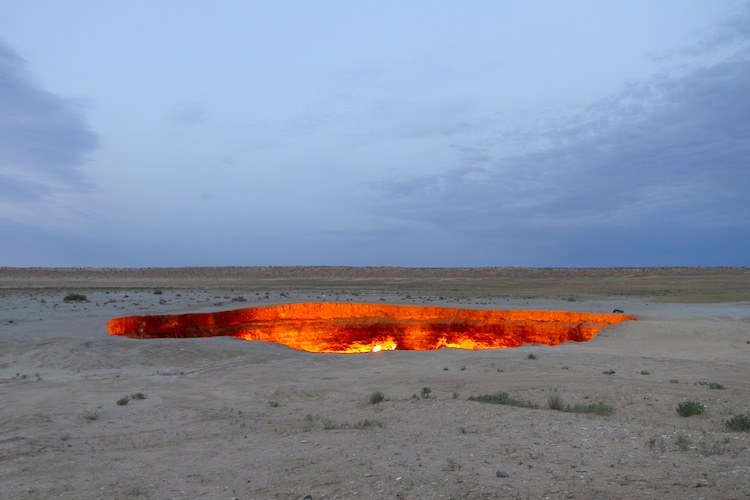
Photo: Stock Photos from Darkydoors/Shutterstock
The rig sat on a pocket of natural gas, which began escaping and endangered local wildlife.
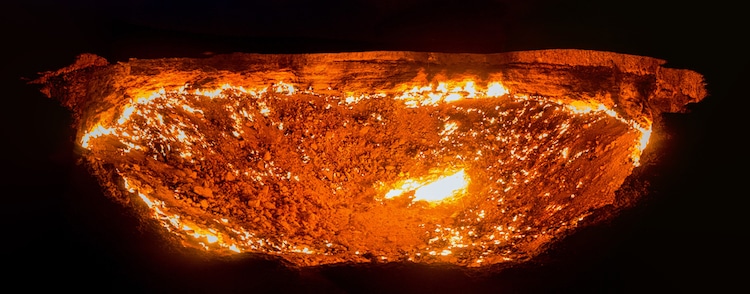
Photo: Stock Photos from Matyas Rehak/Shutterstock
So authorities decided to burn off the gas, thinking it would last a few weeks.
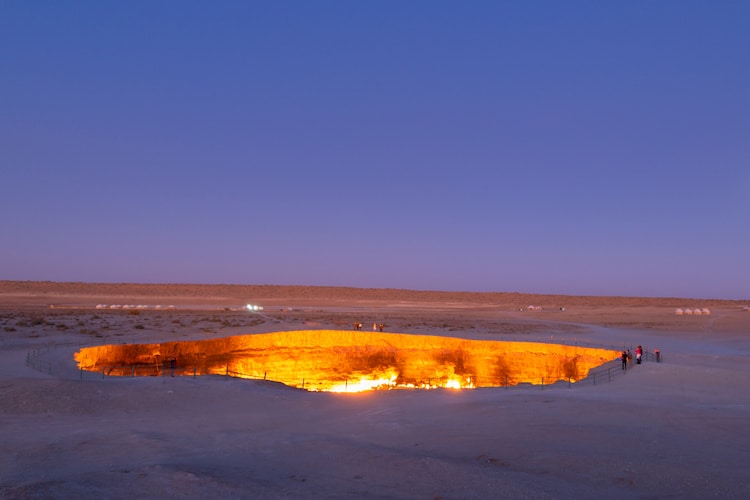
Photo: Stock Photos from Thiago B Trevisan/Shutterstock
Instead, the “Gates of Hell” has been burning for over 50 years and now hundreds flock annually to see the unusual site.
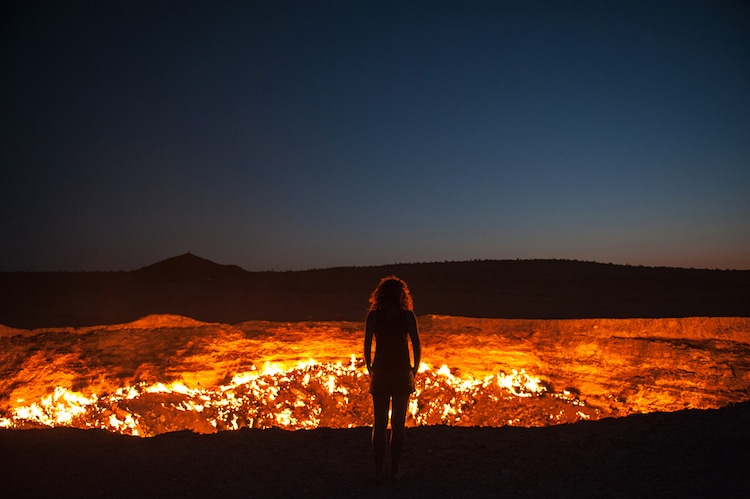
Photo: Stock Photos from Lockenes/Shutterstock
